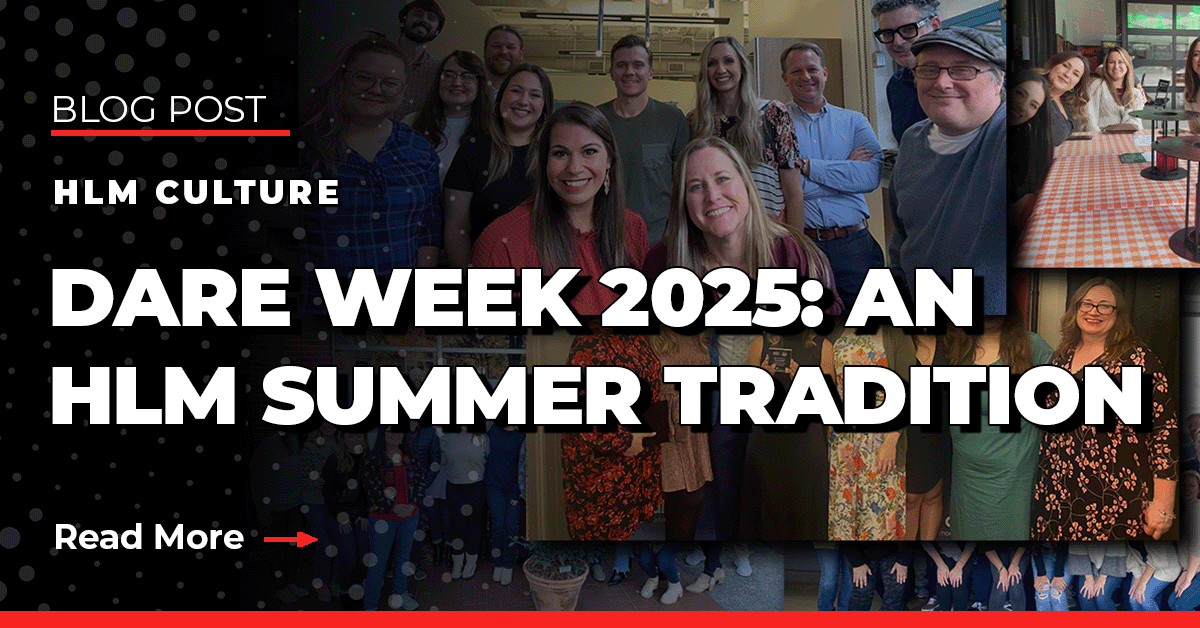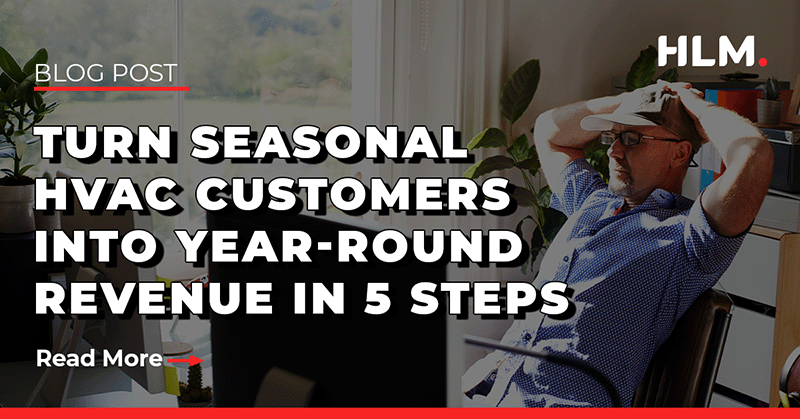8 min read
Paid Ads in 2024 - Has Your Strategy Evolved?
![]() By Alex Berk
Jul 2, 2024 10:59:47 AM
By Alex Berk
Jul 2, 2024 10:59:47 AM

My experience with Google ads began in December of 2015. Since then, I've seen new ad formats, new campaign types, three significant UI updates, and more. Throughout all of those changes, nothing has impacted the success & performance of paid campaigns more than recent modifications to data collection policies and algorithms.
For example, if you suggested building search campaigns with broad match keywords two years ago, I would have politely told you that was a pretty bad idea.
Today, it's almost a necessity in certain markets to stay competitive.
While products like YouTube and Facebook/Meta may have been ignored in the past among businesses seeking to invest in only historically "Lead-Generating" marketing channels, today their value in a multi-touch-point internet is more important than ever.
In this blog we'll review some of the trends, changes, and considerations among the various paid advertising solutions HLM utilizes for our clients in the ever-changing landscape that is Paid Media.
Paid Search
We'll begin Paid Ads - something almost all advertisers, marketers, and business owners have heard of and have an opinion about... one way or another.
Some business owners and marketers feel they're the only way their business stays afloat - ("Paid ads are the main driver of my business and without them we could not compete!")
Other have a more negative sentiment - ("I hate paid ads - I get burned by every agency I’ve ever worked with!")
Love 'em or hate 'em , the reality is that much of the conversions among potential customers and clients happen on Google, through Paid Advertising and SEO.
A great example of recent changes in the Paid Media space is how Google handles options for something called "Match Types." This term is one way Google determines if your ad should show up for a particular search a potential customer, client, or patient executes on Google.
The "Broad Match" Match Type - In the past, using something called "broad match" within a Google Paid Search campaign was synonymous with spam; but after changes to match-type functionality over the past two years, HLM has had to proactively adapt to Google's modifications of how Paid Search works and embrace the use of "Broad Match" match types in campaigns for clients. This results in better outcomes for clients, but does involve extra management and time devoted to each individual campaign.
The "Phrase Match" Match Type - On the opposite end of the match type spectrum is something called "Phrase Match." If Broad Match has historically been so "broad" as to catch searches that may as well be spam, then Phrase Match has historically been so narrow and limited as to catch a very, very small amount of searches that potential customers, clients, and patients are performing on Google. That's why an option between broad and phrase match used to exist called...
The "Broad Match Modified" Match Type - Broad Match Modified (BMM) used to be a great middle-ground option between broad match and phrase match. It provided a healthy balance between providing good campaign performance while still being budget-conscious for HLM clients.
This match type no longer exists.
With this option not available, HLM initially focused on switching campaign strategies to utilize the phrase-match match type instead, but we quickly saw higher Cost-Per-Clicks for our clients, with a decrease in the amount/number of times a client's ad was shown to a relevant Google user.
So How Has HLM Adapted?
We've found that starting with broad match and pairing that with extensive and ongoing negative keyword optimizations has been the best way to find relatively early campaign success. Then, we focus on optimizing keywords that have resulted in conversions into more specific match types once the data supports it. We then often pair this strategy with providing Local Service Ads (LSA) for clients when client budgets and their specific industry supports it.
The Takeaway:
The bottom line here is that your or your agency needs to constantly work to ensure that you're on the forefront of the changes happening in the digital marketing industry, and work proactively to ensure that you're able to pivot and adapt as quickly as possible to preserve and enhance marketing ROI.
Paid Display
Paid Display Ads are most commonly recognized as the ads you see for services & products on other websites after having visited the main website of the service or product itself.
Paid Display Ads are normally thought of as a "remarketing-only" channel in most media plans - meaning you must have visited the original website of the service or product you're now seeing ads for first.
However, Display has become much more sophisticated in the past 5 years.
Interest-Based Targeting - People can be targeted based on common interests, similar to how we'd target in Social Media Paid Ad Campaigns.
Location-Based Targeting - Targeting users based on their location can be easy with display too. Serving ads for a nearby parking lot to those in an airport, or showing concert-goers ads for an upcoming event at the concert they're currently attending are two good examples of this.
Viable Option for Increasing Marketing Repetition - As digital marketing evolves and becomes a bit more competitive, we're constantly looking for multiple ways to create more touch-points for our clients (meaning we need to find multiple ways to put our client's brand in front of their target audience - with anything marketing, repetition is key). Utilizing Display in this manner is a good method to help acheive this.
It's important to understand that paid display ads aren't the primary driver of leads - instead, think of them like a supporting actor in an Emmy-award-winning film, or as necessary comic relief for an otherwise deep and heavy movie... sure, you could have a movie without these supporting roles, but it may end up being a boring and depressing time that you don't feel was worth the price of admission.
The Takeaway:
Paid Display Ads are a type of ad that has gotten more sophisticated over the years, and if you haven't been paying attention, you may be missing out. Just like a supporting actor, paid display ads might not be absolutely required, but they can make or break a movie (or you marketing ROI, in this example).
Paid Social
Paid Social Ads are much like Display Ads as discussed above - they aren't necessarily for those that are ready to purchase your service right this minute, but they absolutely play a role in making your prospective customers, clients, and patients aware that you exist, and generating interest and demand around the services you offer.
That being said, just like display ads, social media advertising has become more sophisticated over the last several years as well, leading to playing a larger role in overall brand awareness and eventual lead generation.
Enhanced Focus on Video - The past 5 years has seen an undeniable explosion in the use, prevalence, and ease-of-creation of video content. it's certainly questionable if 90% of this content is worthy of attention, but what isn't in question is that ads based around video content perform better than many other types of ads. Sure, to do it correctly, a little more technical know-how is still required, but it's never been easier than it is today to create video based ads and content. If you or your agency isn't providing video-based content options, you might be missing out.
Dynamic Creative Optimization (DCO) - As social platforms become more sophisticated and further integrate the use of A.I., the ability for platforms to optimize your social media ads on your behalf has increased as well.
Imagine setting up a campaign and providing 5 images, 10 headlines of text, 4 longer text descriptions about the ad or offer, and 2 "callouts" or "call-to-actions," such as "Call Now," or "Free Quote." It's possible to allow platforms to mix-and-match all different combinations of the above items to essentially run an experiment and determine which combinations perform the best - on what days, at what time of day, in what locations, for which kinds of demographics, etc.
Just because different combinations can be created and tested however doesn't necessarily make social ads any easier to set up and manage - they instead require a shift in thinking and strategy.
You're still limited by the number and types of options to create combinations from, so you or your marketing agency needs to be very thoughtful about how the different elements may combine to create an effective ad, so that the social platform spends as little of your advertising dollars initially on testing all the different outcomes.
And as with any paid advertising effort, constant tweaking and optimization of the campaign is required on an ongoing basis.
AI and Machine Learning for Ad Targeting - Before the current A.I. hype cycle began with the introduction of ChatGPT to the average internet user, Facebook and other social platforms were already utilizing Machine Learning (a type of A.I.), to take a businesses ideal customer and/or current audience based on emails, Facebook accounts, etc., and create what's called a "Lookalike Audience."
A lookalike audience is just what it sounds like - serving ads to an audience of social media users that look an awful lot like a businesses current ideal customer. For a pest control company, you can imagine trying to target potential customers that look as close to their current customers that subscribe to their yearly or monthly pest control service, who have been customers for multiple years, that are low-touch (meaning probably more profitable), and that have similar demographics (age, income, etc.)
To do this effectively, a business must have enough first-party data (email addresses and other pieces of data about current customers, for example), and/or have a sizeable social media following. Social Media Paid Search and Social Media Management can help build a company's social media following as well.
Lead Generation Forms - This is a good example of how, while Social Media still isn't considered a true "Lead Generation" method of marketing, it has evolved over the years to help generate leads for businesses.
By utilizing types of social ads that include forms for potential customers, patients, and clients to submit their information for a follow-up on, social advertising can walk the line between marketing that captures those immediately showing "intent" (heading to Google and typing in "Best Facials near me," or "Emergency HVAC repair"), and marketing whose goal is to simply show someone the name and logo of a company, so that when they are ready for that company's services, they're already aware, familiar, and primed to call that company over others.
The Takeaway:
Social advertising, just like display, has become more nuanced and sophisticated over the years as well, and plays a more blurred - and important - role in eventually (but sometimes sooner rather than later), generating more leads for businesses. Understanding and leveraging these nuances, and combining with a holistic marketing strategy, is key to success.
Paid Video
While we touched on video being used for social ads in the above section, this section focuses on advertising directly on video-based platforms, such as YouTube, Hulu, and more. Think of this as the modern equivalent of investing in traditional commercial ads on traditional cable television. Over the past 5+ years, several trends and technological advancements have enabled this kind of advertising - and one very recent trend discussed below will only accelerate the adoption of advertising on YouTube and streaming platforms.
Internet Availability, Reliability, and Mobile Network Improvements - the past 5-10 years have seen a meteoric rise in the performance and availability of the internet in general across the world. Especially important is the improvement of mobile networks, with 4G and 5G coverage, making video content a viable (if still imperfect), option for mobile streaming. Probably the best example of this is the existence of TikTok... without adequate mobile network internet speeds, TikTok simply wouldn't exist.
The Cord-Cutter Generation - While this isn't as new of a trend as we'd all like to admit given the probable age of the readers of this article, it's an important one, with around 52% of U.S. households no longer subscribing to traditional cable television services, and instead relying on streaming services such as YouTube, Netflix, Amazon Prime, Hulu, Apple+ and others for their entertainment. While those households are a bit younger demographics-wise, the trend is clear - streaming is in and traditional cable is out. This means there's an opportunity for advertising your services on these platforms.
Streaming Services Price Increases - Here's a little secret that most people don't fully understand - massive streaming services like YouTube and Netflix sometimes operate at losses for years. They give their services away for free (or very cheaply), surviving on capital from investors (or from parent companies like Google, in YouTube's case), with the singular goal of growing their number of users, so that one day they can serve all those users ads, and have companies pay for those ad placements.
The time for platforms to begin charging for services, increase the cost of their existing paid services, and introduce new tiers and levels of paid services, are undeniably here.
This was always going to happen, but the timeline was moved forward by the pandemic.
With more people staying at home, more people subscribed to streaming services. This made these services more attractive to investors, meaning these platforms had an extra source of income to rely on, instead of needing to raise prices - again, all in a rush to see which platform could capture more users than the others.
After we began going back to work, viewership decreased. Investors don't like to see that. That has meant less investor money to prop up the unsustainable growth realized during the pandemic.
We're seeing the solution to this problem now, with the crackdown by Netflix on account & password sharing, to all services introducing different tiers, with higher tiers being ad-free, and lower tiers consisting of more ads, shown more often in a shorter amount of time.
The upside here is that more people will see ads more often on streaming platforms, meaning this is quickly becoming an even more viable advertising option for you business.
The Takeaway:
Video is a natural format for consuming content & information that is growing in usage and practicality, spurring it's popularity and adoption. Video platforms are a smart and effective avenue for paid advertising - as long as it's part of a strategic and thoughtful overall marketing strategy, just like with any other advertising effort.
Contact HLM today to learn how to effectively advertise online in 2024 by giving us a call at (888) 717-4249 to speak to someone within minutes, or book a call directly with a consultant on our contact page.
Recent Posts
When you're done with this post, check out our other content below for more Digital Marketing expertise
Contact Us Today
Complete the form below and receive a call within minutes.
Need faster results? Call us now at (888) 717-4249






